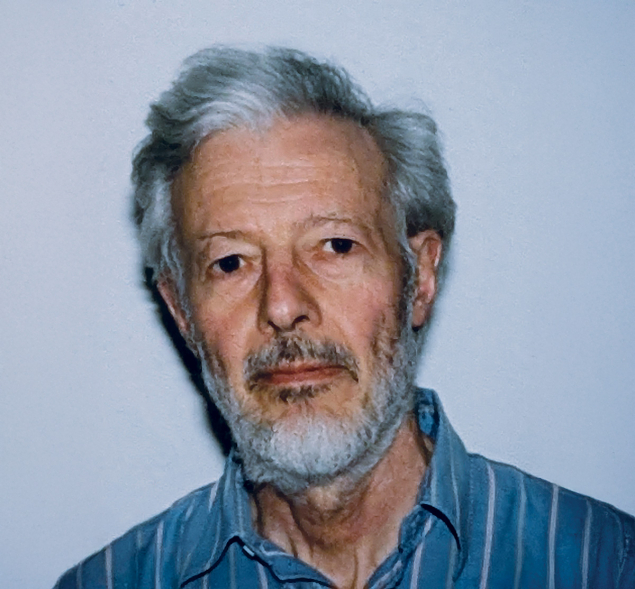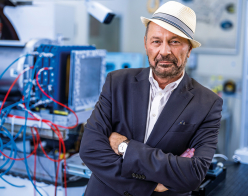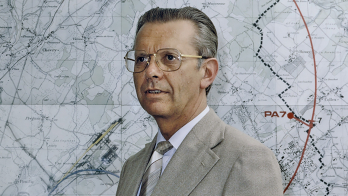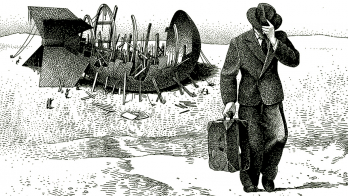
Günter Wolf, who played a leading role in the planning, construction and data analysis of experiments that were instrumental in establishing the Standard Model, passed away on 29 October 2024 at the age of 86. He significantly shaped and contributed to the research programme of DESY, and knew better than almost anyone how to form international collaborations and lead them to the highest achievements.
Born in Ulm, Germany in 1937, Wolf studied physics in Tübingen. At the urging of his supervisor Helmut Faissner, he went to Hamburg in 1961 where the DESY synchrotron was being built under DESY founder Willibald Jentschke. Together with Erich Lohrmann and Martin Teucher, he was involved in the preparation of the bubble-chamber experiments there and at the same time took part in experiments at CERN.
The first phase of experiments with high-energy photons at the DESY synchrotron, in which he was involved, had produced widely recognised results on the electromagnetic interactions of elementary particles. In 1967 Wolf seized the opportunity to continue this research at the higher energies of the recently completed linear accelerator at Stanford University (SLAC). He became the spokesperson for an experiment with a polarised gamma beam, which provided new insights into the nature of vector mesons.
In 1971, Jentschke succeeded in bringing Wolf back to Hamburg as senior scientist. He remained associated with DESY for the rest of his life and became a leader in the planning, construction and analysis of key DESY experiments.
Together with Bjørn Wiik, as part of an international collaboration, Wolf designed and realised the DASP detector for DORIS, the first electron–positron storage ring at DESY. This led to the discovery of the excited states of charmonium in 1975 and thus to the ultimate confirmation that quarks are particles. For the next, larger electron–positron storage ring, PETRA, he designed the TASSO detector, again together with Wiik. In 1979, the TASSO collaboration was able to announce the discovery of the gluon through its spokesperson Wolf, for which he, together with colleagues from TASSO, was awarded the High Energy Particle Physics Prize of the European Physical Society.
Wolf’s negotiating skills and deep understanding of physics and technology served particle physics worldwide
In 1982 Wolf became the chair of the experiment selection committee for the planned LEP collider at CERN. His deep understanding of physics and technology, and his negotiating skills, were an essential foundation for the successful LEP programme, just one example of how Wolf has served particle physics worldwide as a member of international scientific committees.
At the same time, Wolf was involved in the planning of the physics programme for the electron–proton collider HERA. The ZEUS general-purpose detector for experiments at HERA was the work of an international collaboration of more than 400 scientists, that Wolf brought together and led as its spokesperson for many years. The experiments at HERA ran from 1992 to 2007, producing outstanding results that include the direct demonstration of the unification of the weak and electromagnetic force at high momentum transfers, the precise measurement of the structure of the proton, which is determined by quarks and gluons, and the surprising finding that there are collisions in which the proton remains intact even at the highest momentum transfers. In 2011 Wolf was awarded the Stern–Gerlach Medal of the German Physical Society, its highest award for achievements in experimental physics.
When dealing with colleagues and staff, Günter Wolf was always friendly, helpful, encouraging and inspiring, but at the same time demanding and insistent on precision and scientific excellence. He took the opinions of others seriously, but only a thorough and competent analysis could convince him. As a result, he enjoyed the greatest respect from everyone and became a role model and friend to many. DESY owes its reputation in the international physics community not least to people like him.







